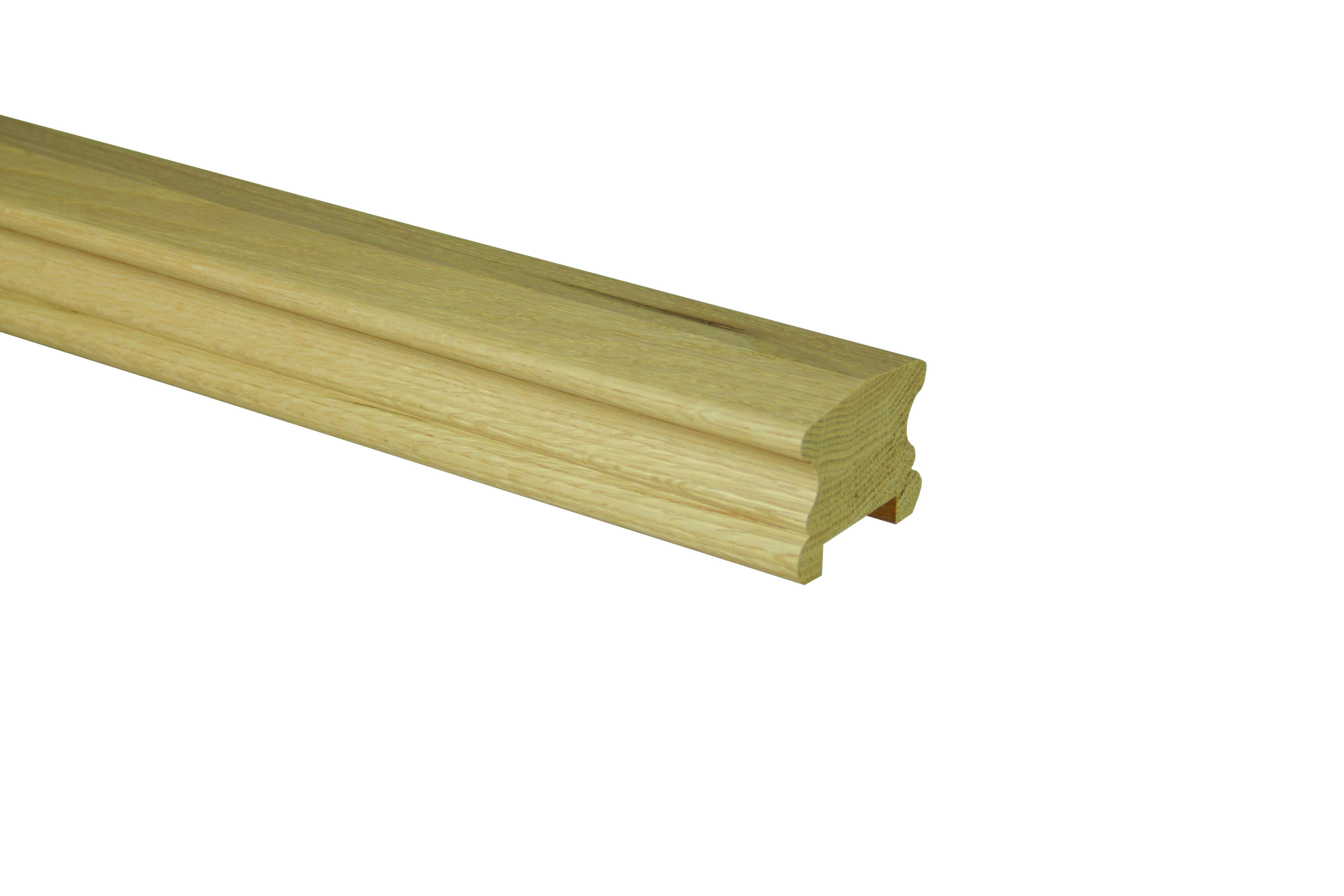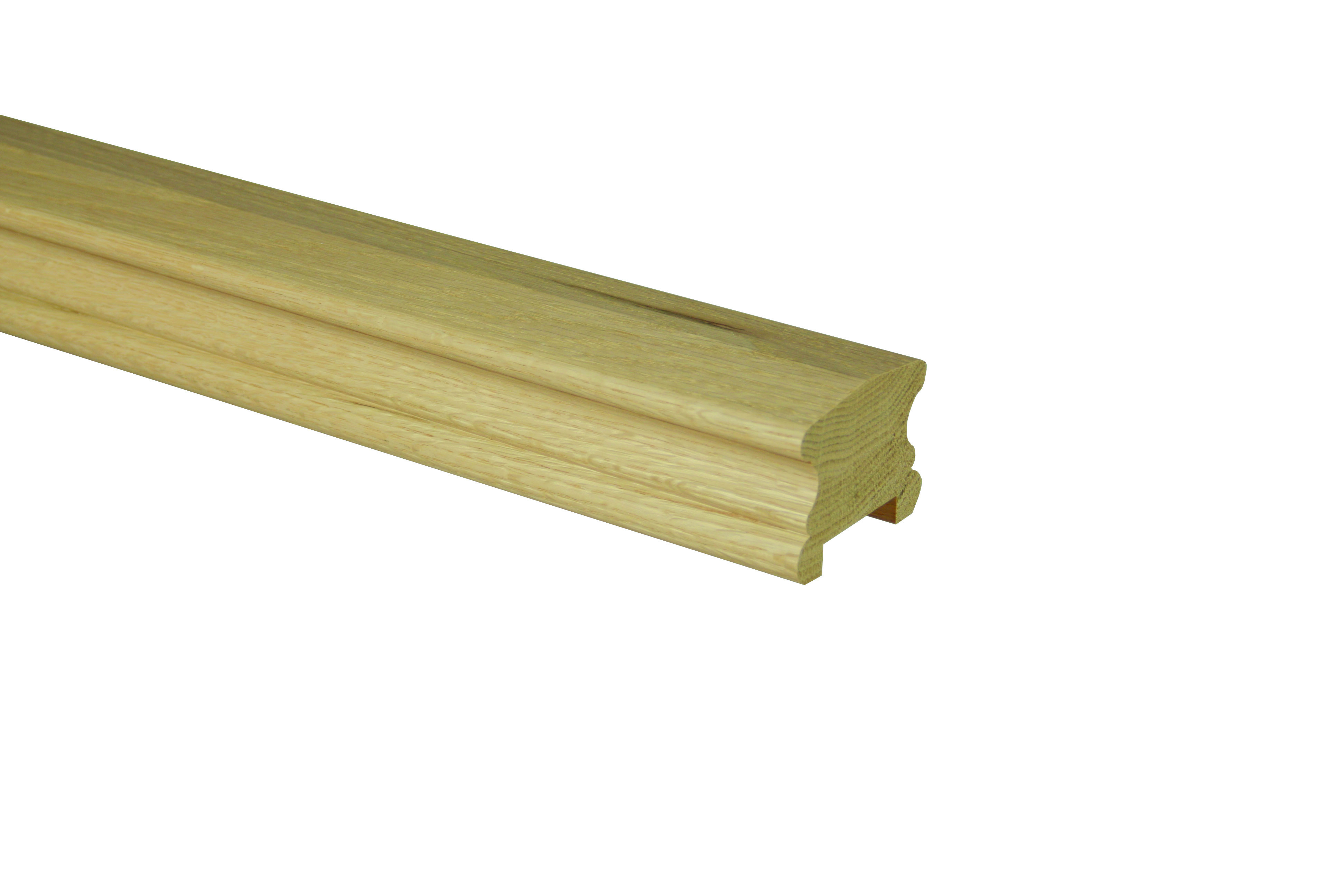Stair Handrails
Handrails provide extra support and safety on your staircase, spindles and balusters fit into the handrail securing them to your staircase. Read our product guide, for support on how to fit a stair balustrade. Our handrails are available in a wide variety of timbers, including oak, pine, hemlock and a white finish.
We also offer a selection of wall-mounted handrails, offering security and style for any staircase.
Browse our full range of wooden handrails to find the perfect match for your project.
Our Design Service86 products
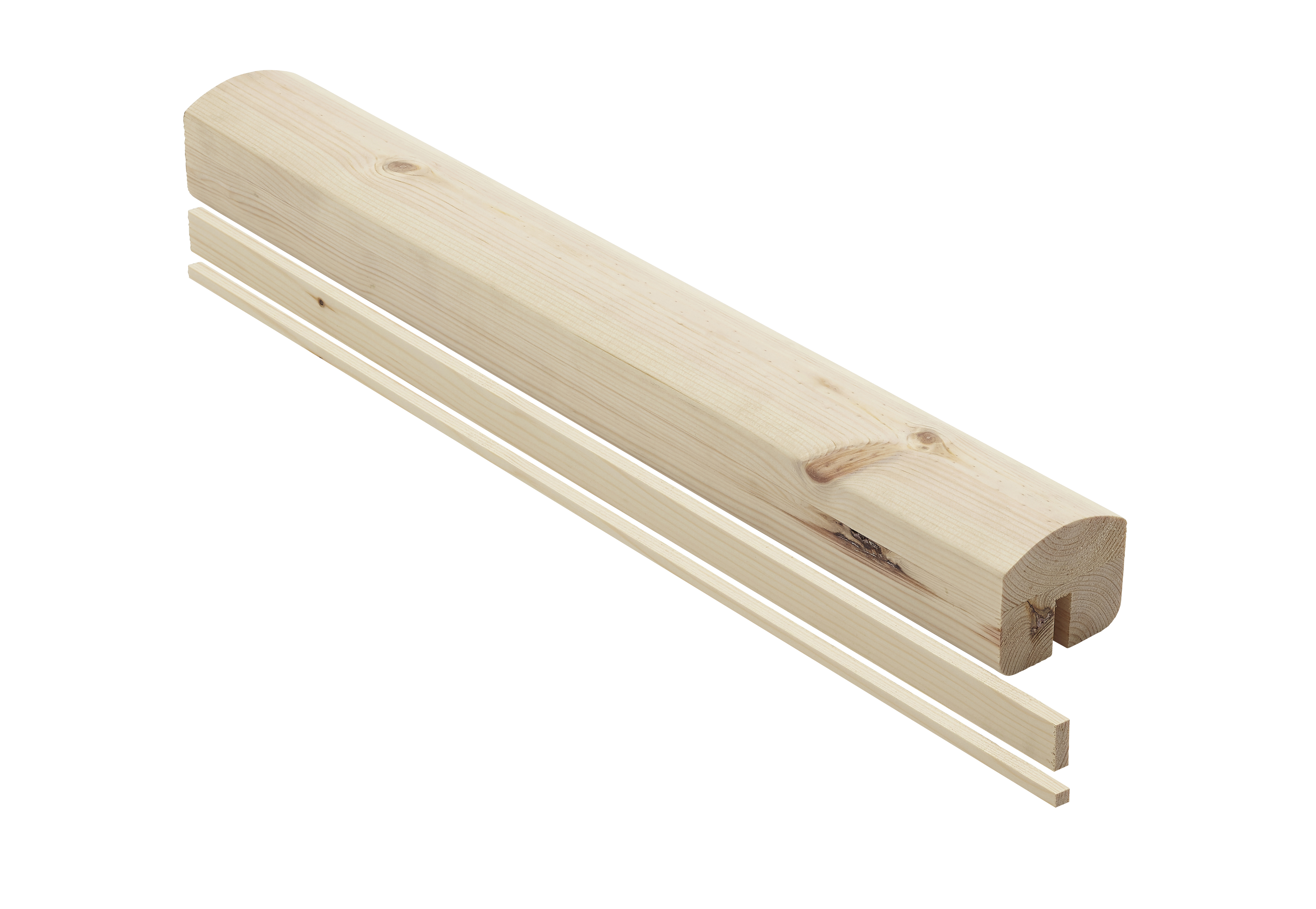 PINE HANDRAIL FOR ELEMENTS INSET GLASS 2400
EGHR2400P
PINE HANDRAIL FOR ELEMENTS INSET GLASS 2400
EGHR2400P
Elements filleted Pine handrail to accomodate 8mm glass
View Product OAK ELEMENTS HANDRAIL FOR INSET GLASS 2400
EGHR2400WO
OAK ELEMENTS HANDRAIL FOR INSET GLASS 2400
EGHR2400WO
Oak Handrail for NEW Elements Inset Glass system 65mm width x 55m height
View Product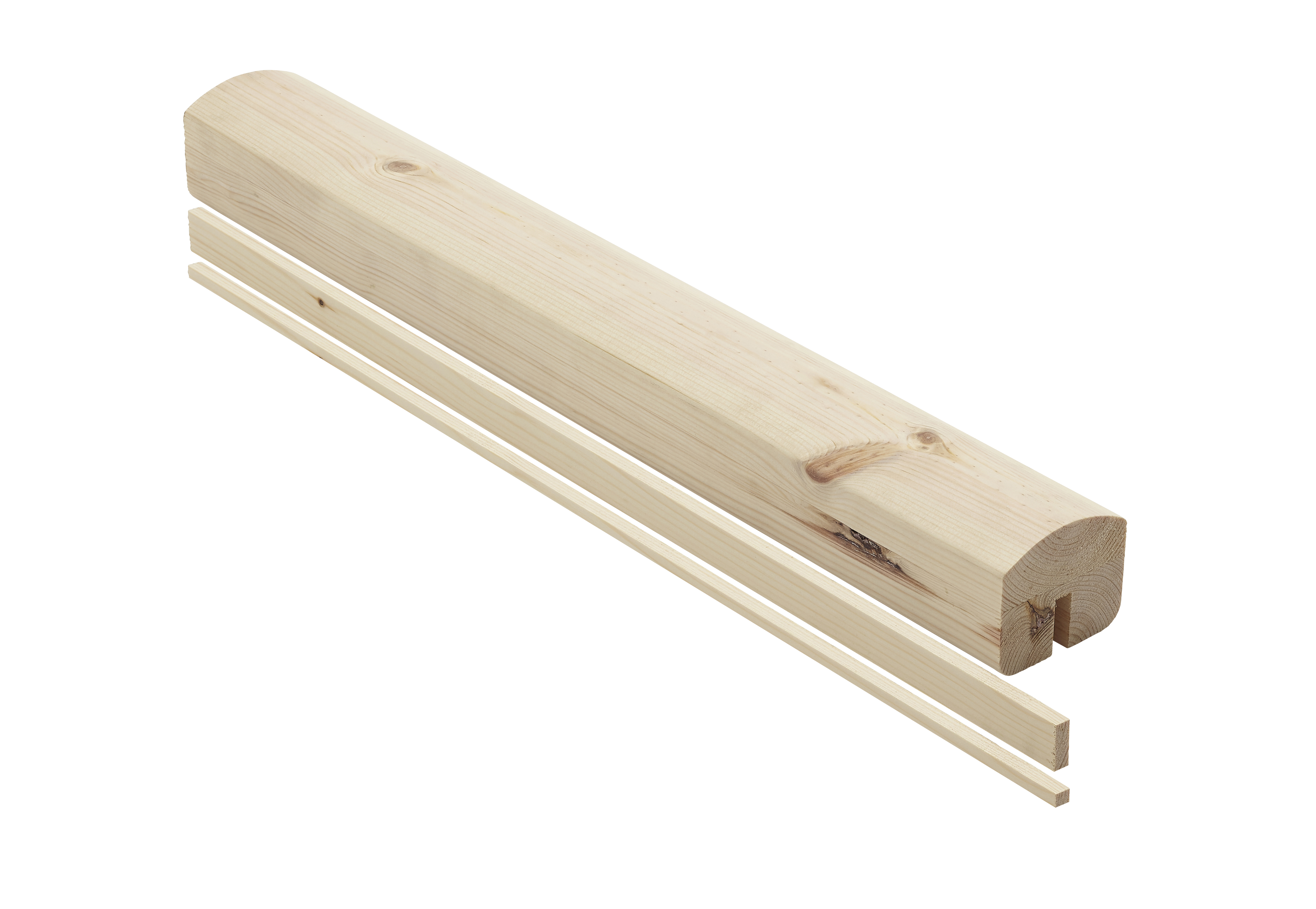 PINE HANDRAIL FOR ELEMENTS INSET GLASS 3600
EGHR3600P
PINE HANDRAIL FOR ELEMENTS INSET GLASS 3600
EGHR3600P
Pine handrail for Elements Inset Glass 3600mm
View Product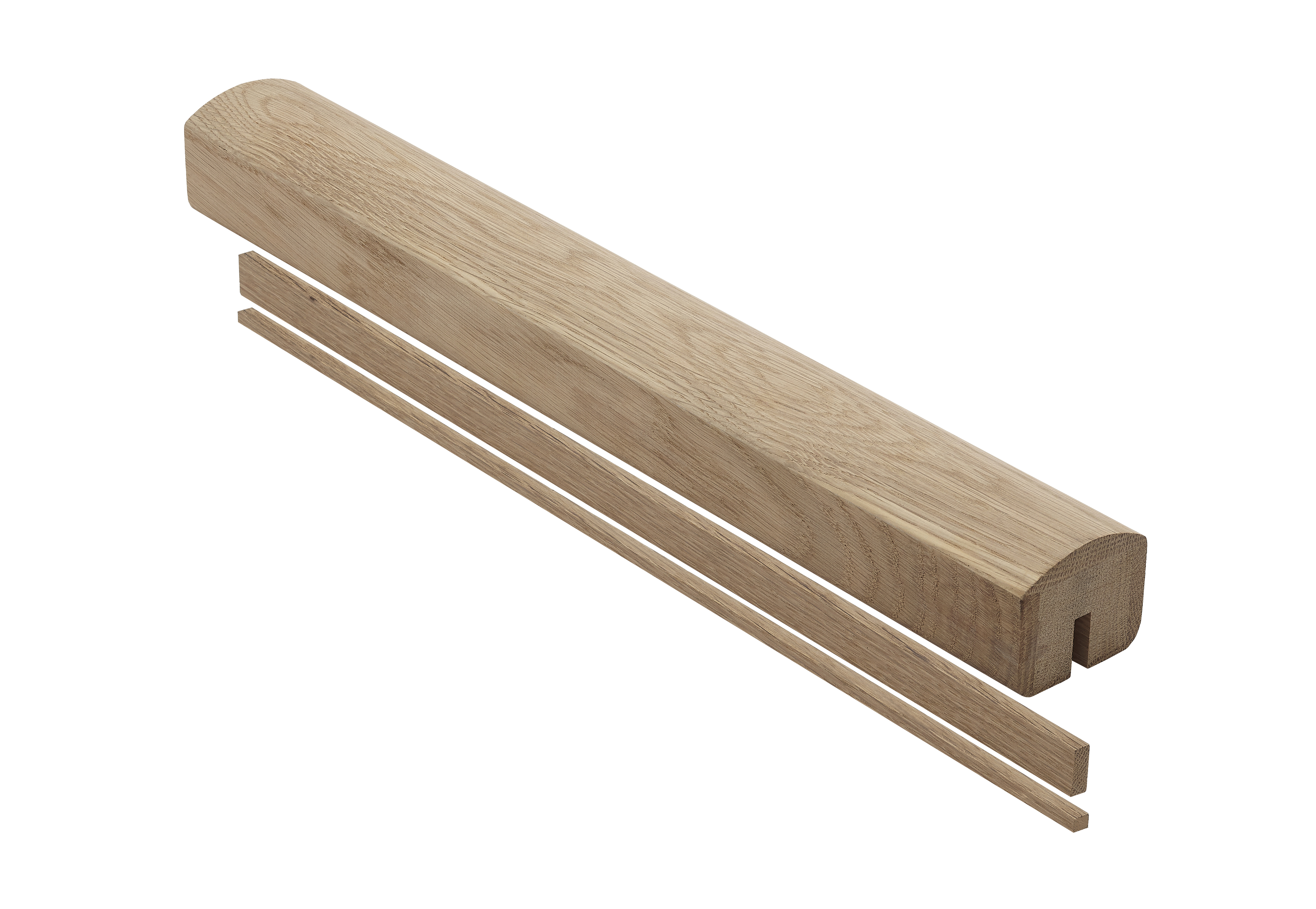 OAK ELEMENTS HANDRAIL FOR INSET GLASS 3600
EGHR3600WO
OAK ELEMENTS HANDRAIL FOR INSET GLASS 3600
EGHR3600WO
Oak Handrail for NEW Elements Inset Glass system 65mm width x 55mm height
View Product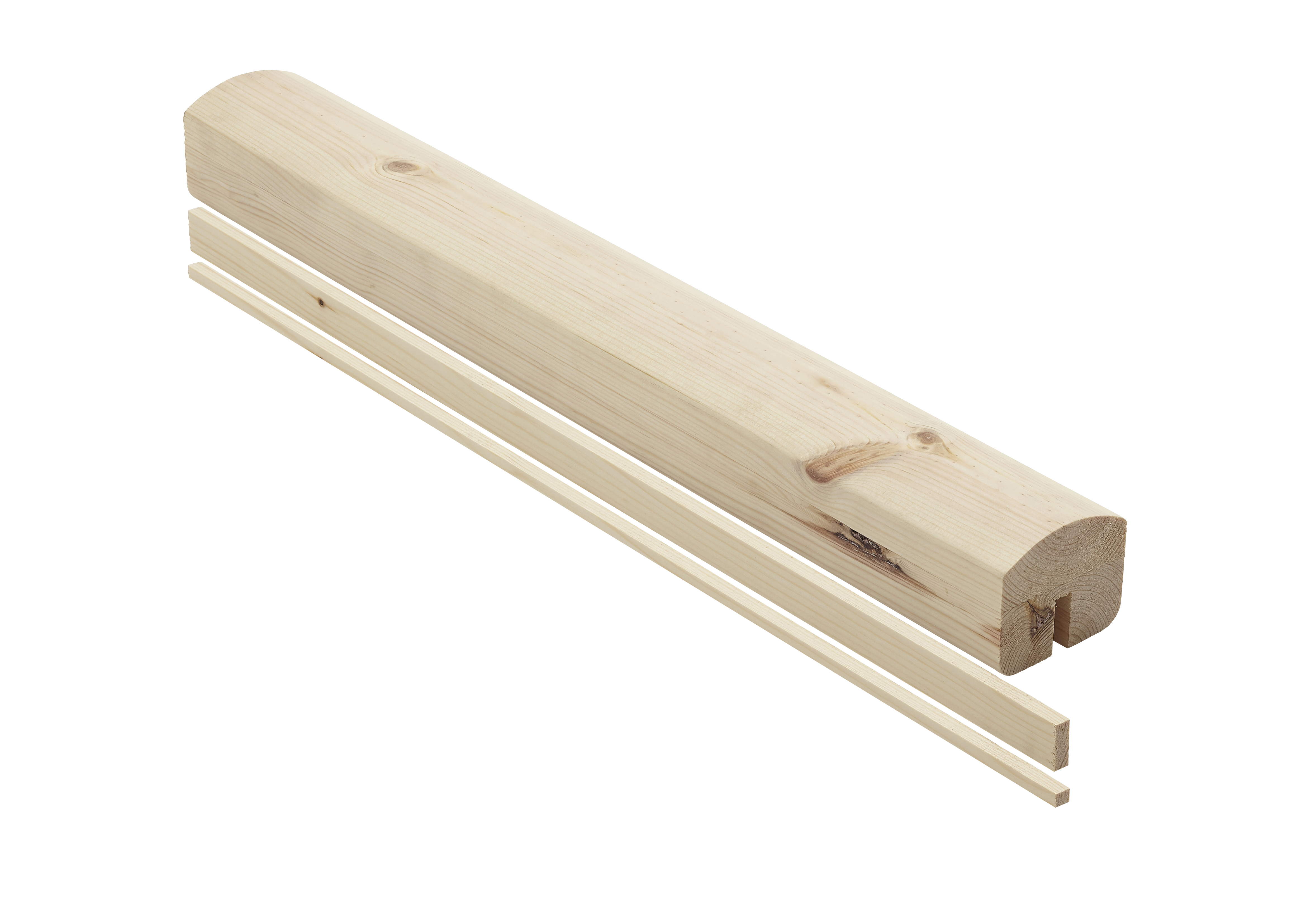 PINE HANDRAIL FOR ELEMENTS INSET GLASS 4200
EGHR4200P
PINE HANDRAIL FOR ELEMENTS INSET GLASS 4200
EGHR4200P
Pine Handrail for Elements Inset Glass 4200mm
View ProductFAQs
Handrails
How tall should handrails be?
Handrails should be installed at a height of 900mm to 1000mm (36 to 39 inches) from the stair tread to meet standard building codes. For public or commercial spaces, this height ensures accessibility and compliance with regulations such as the Disability Discrimination Act (DDA) and other local building codes. Always check regional codes as certain areas, particularly for public buildings, may have additional requirements regarding handrail height and load-bearing capacity.
How to install handrails on stairs?
Installing handrails on stairs is crucial from a safety and compliance perspective in stair design. Here’s a professional guide to installing handrails:
- Measure the Length: Accurately measure the total length of the stair run to ensure the handrail is the right size, factoring in the staircase’s rise and run.
- Position Brackets: Mark the location for handrail brackets on the wall or newel posts. Ensure they are placed at a consistent height (typically 900mm to 1000mm) for proper grip and usability.
- Install Brackets Securely: Fix the brackets to the wall or newel posts using appropriate wall anchors or screws. It’s critical to ensure the brackets are level and securely fastened for maximum stability.
- Attach the Handrail: Position the handrail onto the installed brackets and secure it using screws or adhesive, depending on the handrail type. Ensure the handrail is tightly fixed and offers full support.
- Quality Check: Verify that the handrail is securely attached by applying light pressure to check for movement or instability.
Proper installation ensures safety and longevity, which is critical in commercial and high-traffic spaces.
Is a handrail a legal requirement?
Yes, handrails are a legal requirement in most residential, commercial, and public buildings. Building regulations typically mandate the installation of handrails on stairs with more than three steps to ensure safety and accessibility. The specific requirements may vary, but handrails are essential for preventing falls and offering support, especially in high-traffic environments like commercial properties. Always check local building codes and regulations for your project to ensure compliance with safety standards.
What are the different types of handrails?
When choosing handrails for a project, it’s essential to select the right type based on the design, functionality, and regulatory requirements. Common types include:
- Straight Handrails: Ideal for straightforward staircases, these provide robust support and are easy to install.
- Curved Handrails: Typically used for stairs with landings, curves, or bends, these handrails require precise measurements and custom fitting.
- Wall-Mounted Handrails: Fixed directly to the wall, these are perfect for narrow spaces or where space limitations prevent the use of traditional post-supported handrails.
- Newel Post Handrails: Often used in conjunction with posts at the top and bottom of the stairs, these provide additional structural support and are commonly found in traditional staircases.
- Glass Handrails: Used in modern or contemporary designs, glass handrails offer a sleek, minimalistic appearance while providing a secure barrier.
Each type of handrail serves specific design and safety needs, so it’s important to choose the right one for your project’s requirements and building codes.
Categories
Our stairparts, mouldings and timber are categorised to help you easily find the product you need.
Wall Panelling
From classic charm to contemporary flair, our range of wall panels and boards add texture, style and personality to any space. Explore high-quality interior wall panelling expertly designed to suit any style or room design.
Design ServiceStairparts
From timeless wooden spindles to sleek modern handrails, explore the full collection of Richard Burbidge stairparts and stair systems. Designed for every style and staircase design, our components combine expert craftsmanship with easy installation.
Design ServiceShop By Collection
Mouldings
From finishing trims to standout features, our expertly crafted mouldings offer quality, versatility, and timeless design. Choose from a wide range of profiles and materials to elevate walls, doors, windows, and more.
Design ServiceShop By Collection
Shop By Part
Outdoor
Transform your outdoor spaces with our expertly crafted range of timber balustrades, panels, porches, and accessories. Whether you're creating a classic garden retreat or a sleek, contemporary deck, our collections offer high-quality, treated timber and low-maintenance solutions built to last.
Design Service
